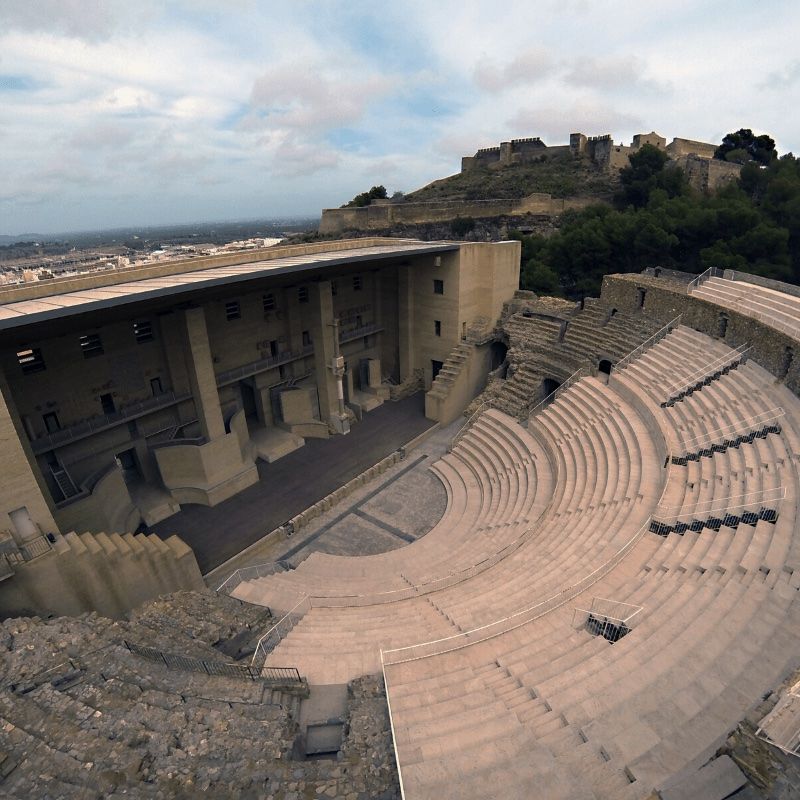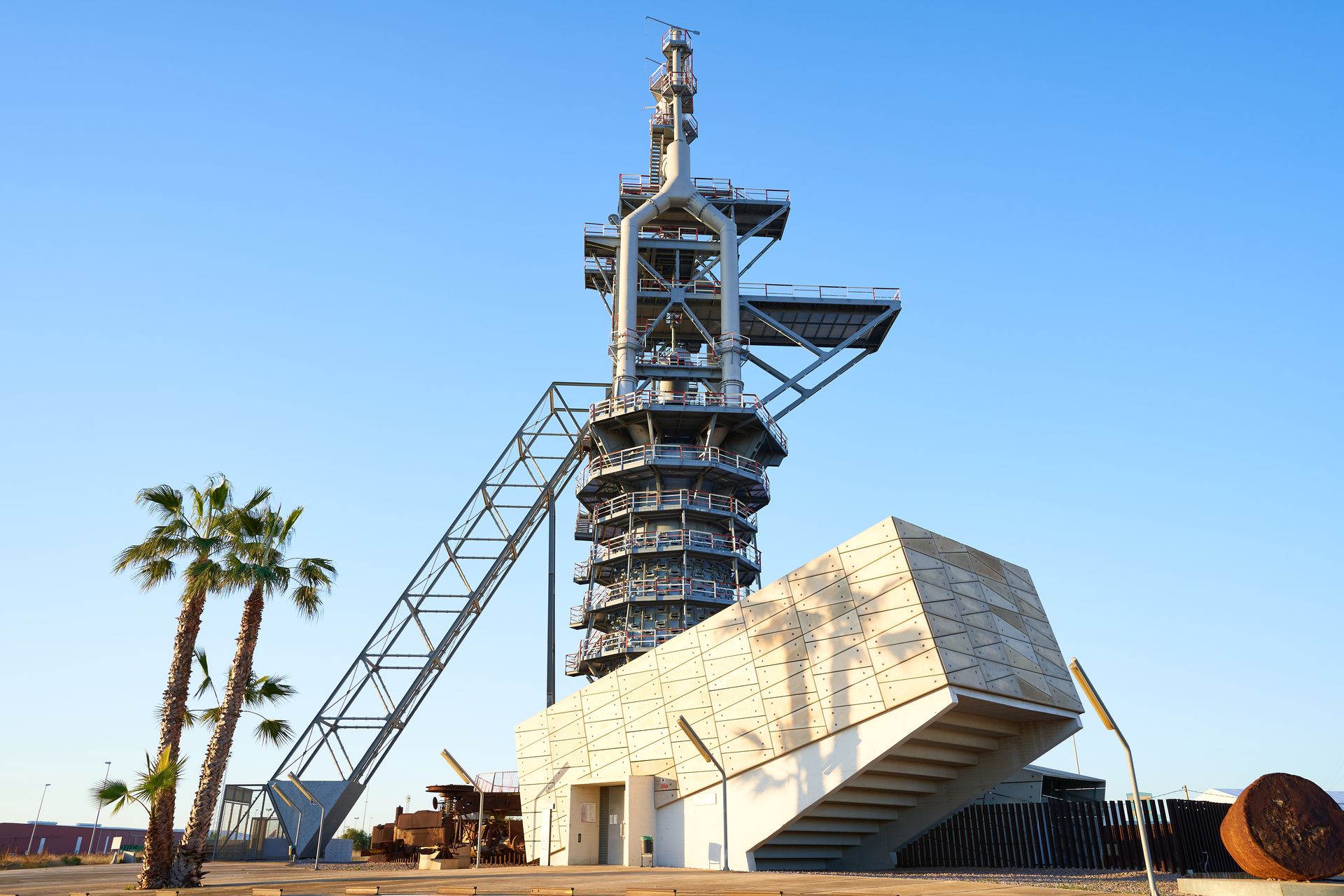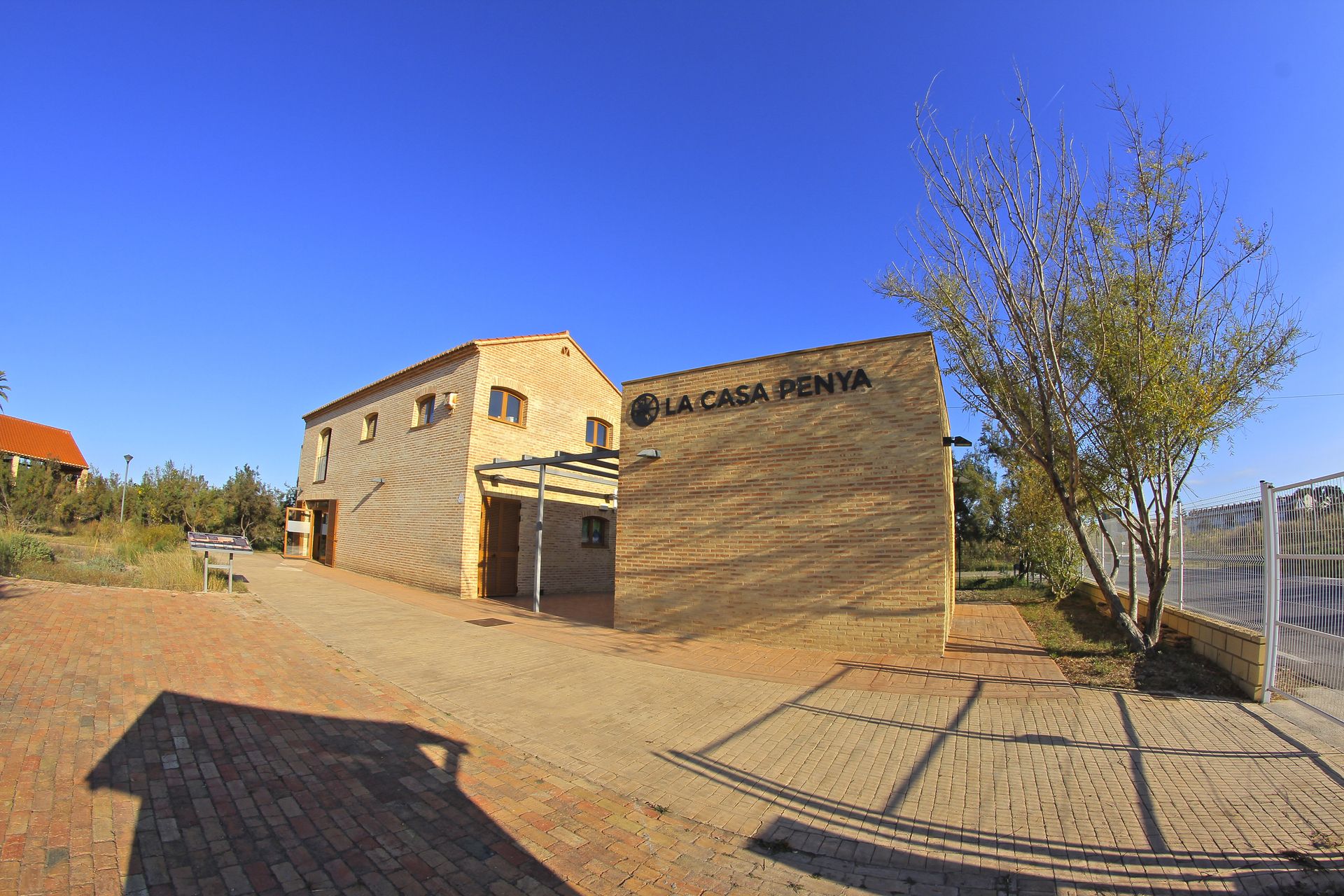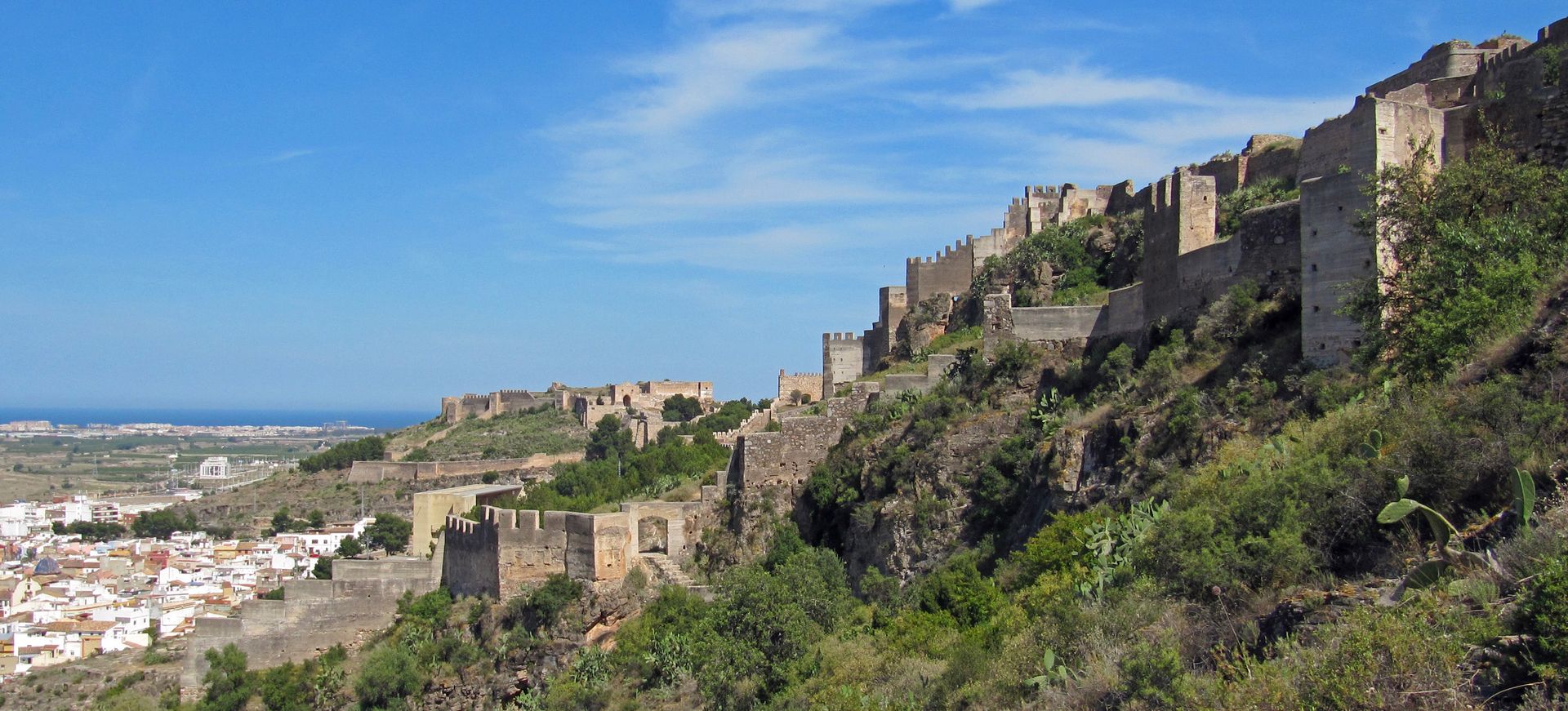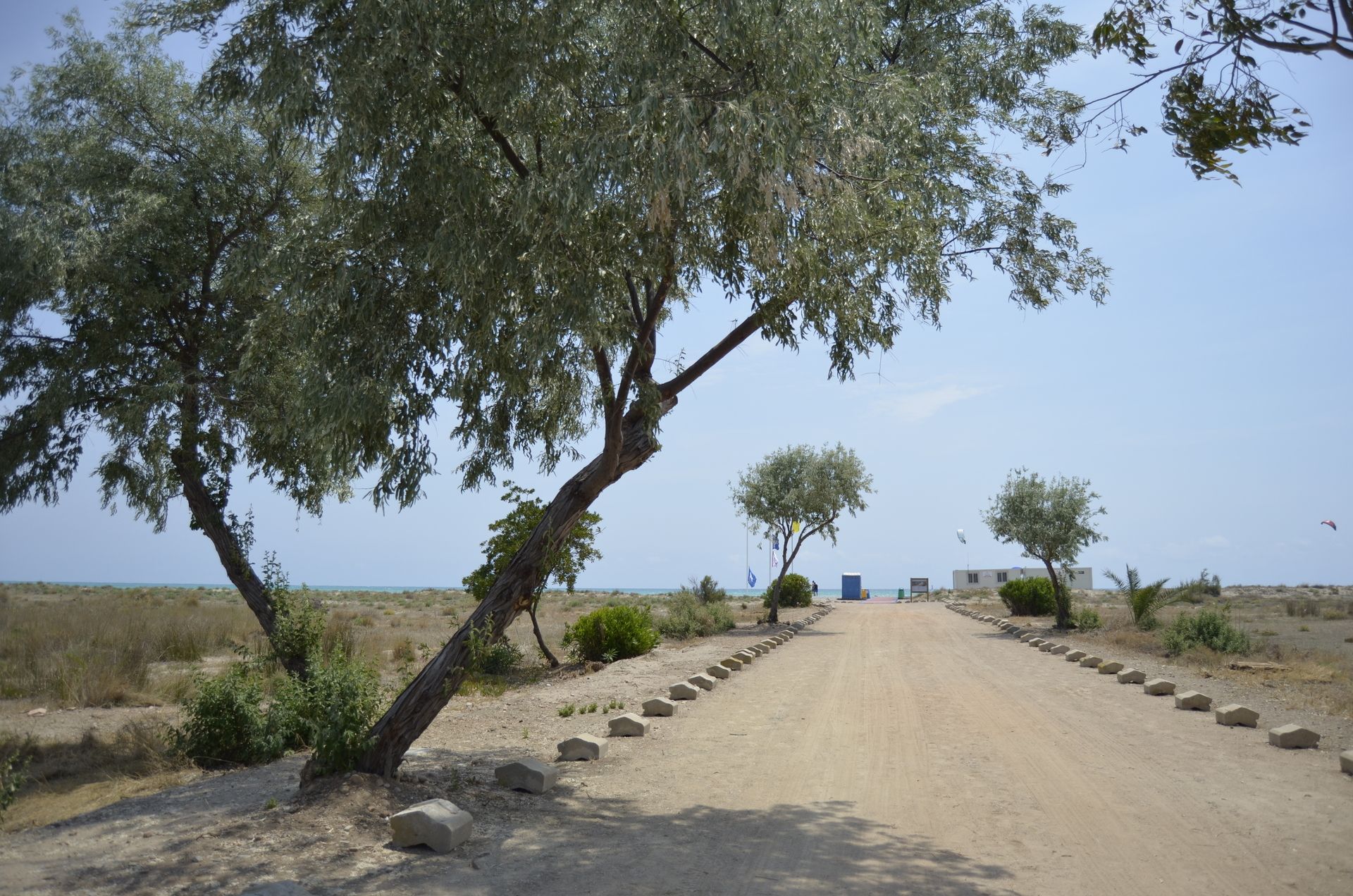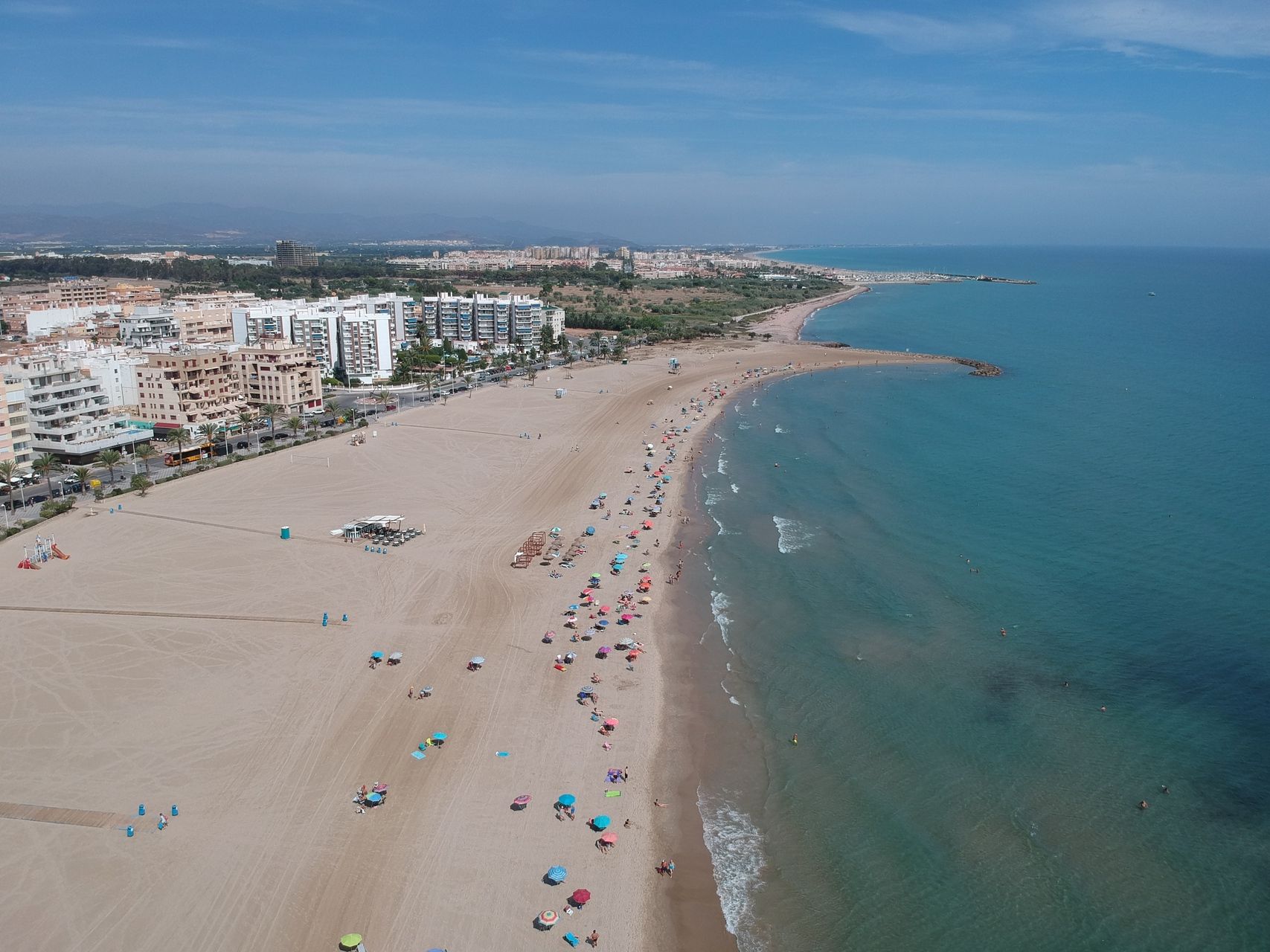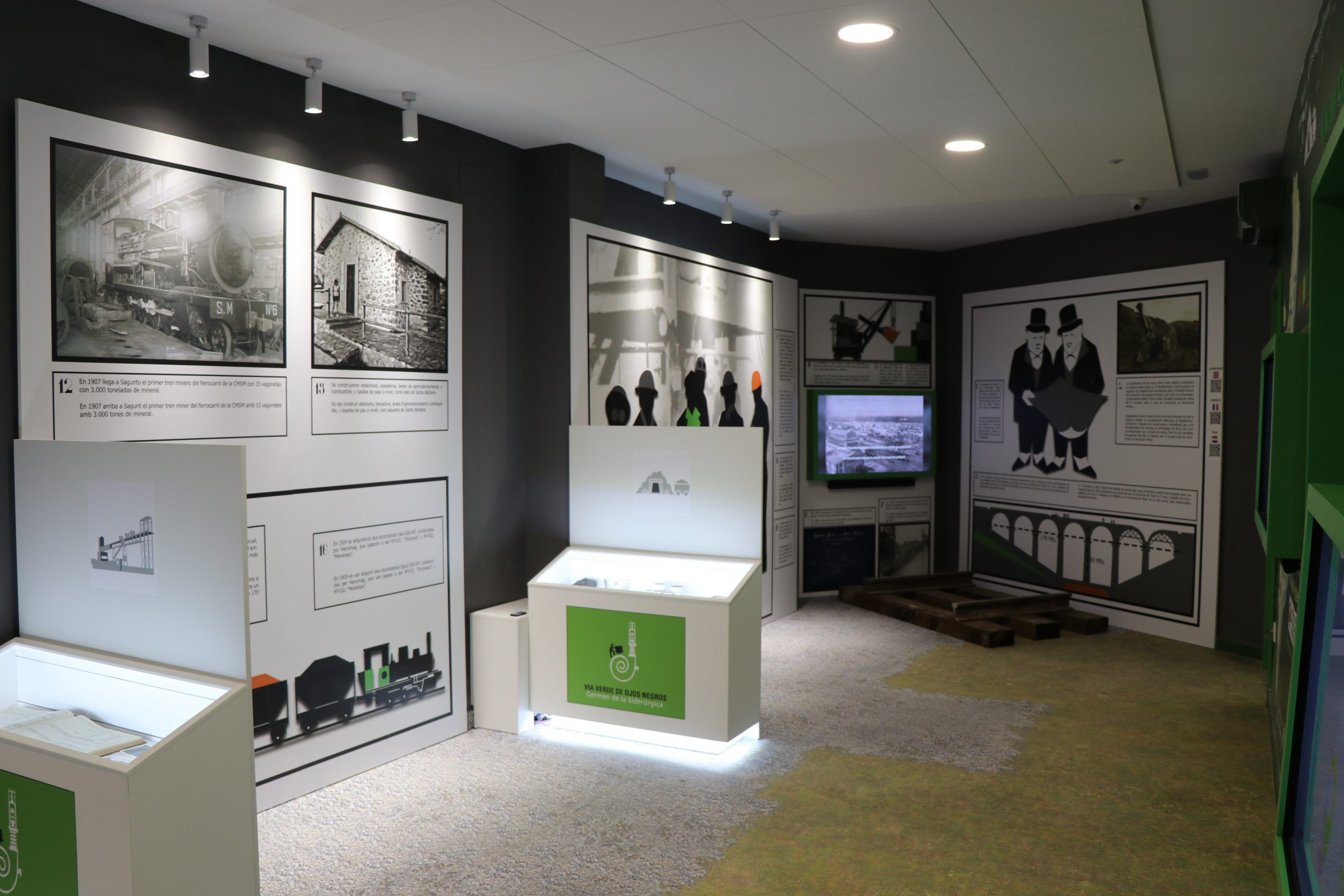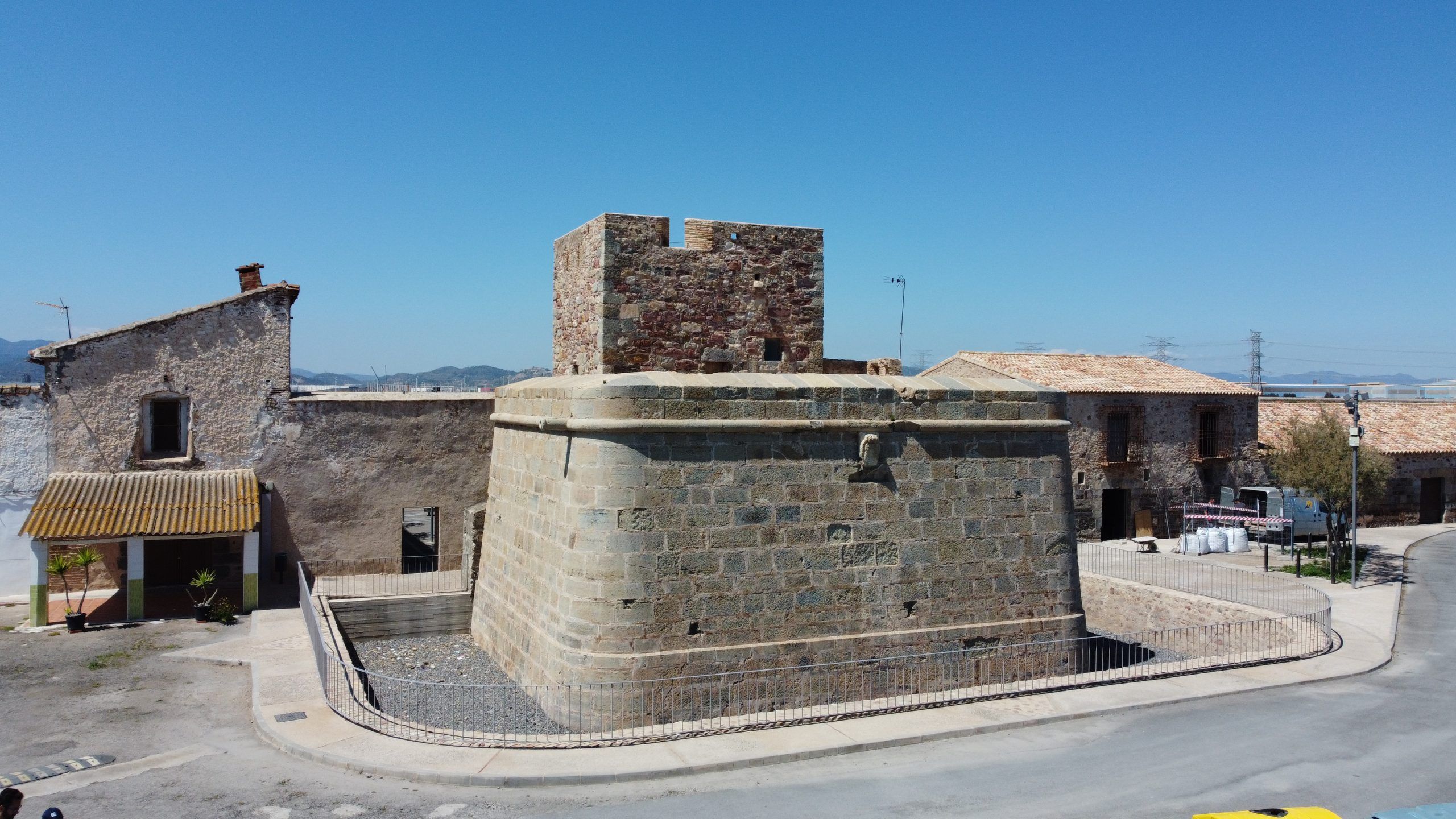Sagunto
The town has two main centres: the old town or Sagunto-City, located at the foot of the castle and the Roman theatre, and Puerto de Sagunto, 5 km from the historic centre.
Through its noble stones, Sagunto relates the history of the majestic, decisive cultures that have existed in the history of the Iberian Peninsula. A stroll through the historic-artistic centre, with its vestiges of past centuries and national monuments, provides a journey through time, given of the importance of the town’s historical and archaeological heritage.
The centre of Puerto de Sagunto, one of the last manufacturing towns in Spain, offers us a tour of its past, including the Blast Furnace No. 2, a symbol of its industrial heritage.
Our 13 kilometres of coastline offer many options for enjoyment and relaxation, with Blue Flag beaches holding certificates of environmental suitability, accessibility, quality and Q for Qualitur and Q for Tourism Quality flags, mountain trails, local history and a rich cultural offer.
Gastronomy:
The quintessential dish of the town of Sagunto is paella, although there are also many other types of rice dishes, such as “Arrós a banda” (rice with fish stock) and “l’Arrós negre” (rice with squid ink), “Olla amb fesols naps” (stew with beans and turnips), as well as other typical foods such “coca amb tomata” (pastry with tomato topping), “pastissets farcits de verdures” (vegetable cakes), “ou dur in tonyina” (eggs with tuna) and “Mandonguilles de carn” (meatballs). The most typical of the local sweets and desserts are sweet potato cakes, aniseed donuts and “coca caldosa”.
Places of interest:
A walk through Sagunto reveals the greatness of a town with nearly three millennia of history.
The Castle is a defensive fortification measuring almost one kilometre in length. It is currently surrounded by walls dating from different periods and styles, and it is possible to find Iberian, Roman, medieval and modern remains. It was declared a National Monument in 1931.
“La Plaza de Armas” includes the remains of the Roman forum, a cistern carved in the rock, public buildings, vestiges of shops, religious buildings and the north and south abutments that delimited the public square. The “Epigraphic Antiquarium” can be visited in Plaza de San Fernando.
The Roman Theatre (1st-century) is located at the foot of the hill which is crowned by the castle. In 1896 it was declared a National Monument. It had capacity for 8,000 spectators. In summer, artistic performances are staged during the “Sagunto on Stage” Festival.
The Town Square was the centre of medieval life in Sagunto. Its structure has remained unchanged. In the vicinity of the “Plaza” we find the Municipal Palace and the remains of the Temple of Diana, a National Monument since 1963, and the only building that was saved from destruction by Hannibal.
Sagunto Historical Museum, which is located on Calle Castillo in Mestre Penya House, has a 14th-century gothic layout. It hosts a fine selection of the important collection of archaeological finds discovered during the excavations that have been carried out in the castle, town and surroundings. Its collection of Latin epigraphy is one of the most important in Spain. There are also inscriptions with Iberian and Hebraic characters; mosaics with varied decoration. One of the most important works is the Toro Ibérico, a limestone sculpture dating from the 4t-century BC. Other interesting pieces include Iberian vessels, ceramics from the Valencian Bronze Age, the Bacchic Hermes and a head attributed to the goddess Diana.
Recent discoveries include the archaeological spaces of “Via del Portico” and “Casa dels Peixos”: The area known as ‘Portici Via’, consists of a Roman road of 60m in length, one of the main access roads to the town, water tanks, houses, places of worship, etc. The development of the urban fabric of Saguntum can be observed here. “La Domus dels Peixos”, dating from the 2nd-century, is a Roman villa in the style of a Pompeian atrium house and which still preserves its original wall paintings.
La Casa dels Berenguer is a 14th-/15th-century Gothic palace with Renaissance influences and which houses the town’s Visitor Reception and Interpretation Centre. Among other services, it has a room displaying models, panels and audiovisuals detailing the history of the village and its monuments, together with another area dedicated to temporary exhibitions. Also on display is a series of archaeological pieces in perfect condition, such as a pool used for Jewish ritual bathing, or “mikveh”.
The Church of Saint Mary is located on the former Murviedo mosque. Of gothic style, its construction was begun in 1334 and it was declared a National Monument in 1982. The Church of the Saviour (13th-century) was built by order of James I of Aragon. It is one of the oldest temples in the Valencian diocese. Located in the suburb of the same name and built in a primitive gothic style, the church has a polygonal apse and Romanesque façade. It was declared a historic-artistic monument in 2007.
Another important site is the Jewry Portal, which serves as access to the Jewish Quarter, located in the upper part of the village. It is also known as Portalet de la Sang (the Blood Gate), as following the expulsion of the Jews the synagogue was occupied by the Confraternity of the Immaculate Blood of Christ.
As for the Roman Circus Gate, the existing remains are those of an old door in the form of a rectangular prism.
The Hermitage of Blood is baroque in style and dates from 1607. It is the seat of the Confraternity of the Immaculate Blood of Our Lord Jesus Christ. This is the starting point for the majority of the religious acts that form part of Sagunto’s Holy Week. The celebration’s processional floats are kept in the hermitage.
The Calvary, built in the mid-19th century on the slopes of Castle hill, is a beautiful setting in which, at dawn on Good Friday, the representation of the Passion and Death of Jesus Christ takes place.
Puerto de Sagunto is the modern heart of the city, located on the shores of the Mediterranean Sea some 5 km from the legendary Roman Saguntum and 25km from Valencia. It is known for its beaches, for its people and for its leisure areas … but above all for its former condition as one of the most important factory towns of Spain.
The brief history of the Port is to be found in the industrial remains that survived following the dismantling of the steel-manufacturing plant. These facilities represent the village’s industrial-historical heritage, representative of the industrial city in which municipality and its industrial development went hand in hand.
Blast Furnace Nº.2 is the only surviving blast furnace tower of the three that were in operation at the height of the steel industry’s activity in Puerto de Sagunto. The structure, which is 64 metres high, was built in 1922 and rebuilt in the 1960s. Operating at 1000 degrees centigrade, it was used to create the steel and iron that was employed in the large construction projects of the 20th-century, such as the building known as the “finca de hierro” in Valencia, the Windsor building in Madrid, the Telefonica building in Seville and the Seat factory in Barcelona. Following its restoration, it received the Europa Nostra 2012 (European Union Prize for Cultural Heritage) Award. Visitors to the furnace tower can discover how it worked and find out about the steel-making industry that gave rise to the Port of Sagunto.
The General Workshops – “La Nau”, were built in 1919 to house boiler shops, locomotives repairs and foundry and adjustment work. They stand out for their strong aesthetic character. The site has been recently been restored for different uses.
The Almacén de Efectos y Repuestos (Equipment & Parts Warehouse) dates from 1927 and was designed for the storage of dies and parts employed in the machinery used in the steel industry. It houses the future Museum of Industrial Archaeology.
Mention may be made of the Ciudad-Jardín de la Gerencia, a group of residential buildings used for housing Basque engineers, and the Barrio Obrero (Workers Quarter), in which the workers lived.
The Church of Our Lady of Begoña, built in 1929 and dedicated to the Virgin of Begoña, has an eclectic character. Its formal structure follows the model of a basilica layout, with the interior displaying the characteristics of the Renaissance style. The main façade, meanwhile, of pyramidal configuration, displays Baroque elements (scrolls, pinnacles and turrets). It also shows influences from the traditional Basque architecture in the annex which forms the Abbey House. It is noteworthy that it was created in the image and likeness of the Basilica de Begoña in Bilbao, thus recalling the Basque origins of its patrons.
The municipality of Sagunto has 13 kilometres of coastline along which to enjoy the sun and its beaches. The sandy beaches, such as “La Malvarrosa de Corinto”, “Almardà” and Puerto de Sagunto beach, are surrounded by banks of dunes held in place by vegetation and are considered among the best in the Valencia Region.
They offer a seafront promenade, hotel, catering and leisure services., three European Blue Flags, ten ISO environmental suitability, accessibility and quality certifications, along with two Q for Quality Tourism and two Q Qualitur flags in recognition of their prestige and environmental and tourism excellence.
Our beaches are equipped with lifeguard services, health centres, coastal police, accessible points, civil protection, a beachfront library and cleaning services. They also offer parasols, deck chairs and bars.
As for crafts, mention may be made of the local cork jugs which, depending on their form, are called “colxo” or “colxa”.
Festivities:
Sagunto’s Holy Week, organized by the Confraternity of the Immaculate Blood of Our Lord Jesus Christ, dates back to the late 15th-century. Visitors must not miss the live representation of the Passion of Christ, the processions of Silence and the Painful Encounter and especially the celebrations held on Good Friday, with the Via Crucis at dawn, which goes from the Hermitage of Blood to the Calvary, and the great, multitudinous manifestation of faith represented by the procession of the Holy Burial. In the Ermita de la Sangre (Hermitage of the Blood), visitors can admire sculptures pertaining to the processions. It has been declared a Festival of National Tourist Interest.
For almost a century, Sagunto has celebrated “Las Fallas”. From 15th to 19th March, St. Joseph’s day, the city is filled with joy and good humour. The “Falleros” and “Falleras” prepare the events that take place during the week of the “Fallas” festivities: the “Crida” (proclamation of the festivities); the “Fallas” Humour Procession; the installation in the streets of the “Fallas” monuments; the offering of flowers to Our Lady of the Forsaken, and the awarding of the festivities’ prizes. The different acts are accompanied by the music of the passacaglia and the noise of firecrackers and “mascletaes”, encouraging visitors to join in the fun and excitement of a truly unique event. Sagunto has over sixty “Fallas” monuments. On the magical night of Saint Joseph, fire and flames envelop the “Fallas” monuments in a gigantic bonfire: it is the night of the “Cremà” that brings the festivities to a close. Declared a Festival of National Tourist Interest.
During the second half of July, the village’s traditional festivals are held in honour of the patron saints, the Holy Martyrs Abdon and Sennen. In mid-July, celebrations are held in Sagunto in honour of Our Lady of Mount Carmel. During the first fortnight in August, the village celebrates Our Lady of Begoña with its famous maritime cucañas (greased poles which participants must run along) in the harbour basin. The most notable festival acts include sports competitions, music shows, bull-fighting and bull-running, art exhibitions, the traditional “Cordà” firework display, as well as traditional firework displays. The “Sagunto on Stage” Festival includes plays, music and dance, which are performed at the Roman Theatre during the summer months.
Naturally, October sees the celebration of Moors and Christians festivities, one of Sagunto’s most appealing attractions. Organized by the Association of Moors and Christians Festivities. The carnival troupes relive the battles that took place during the conquest of the city. Mention may be made of “La Entrà”, composed of parades accompanied by music. The Port of Almenara del Castillo plays host to the vibrant speeches of the respective Ambassadors, followed the re-enactment of the battle that saw the “reconquest” of the village.
